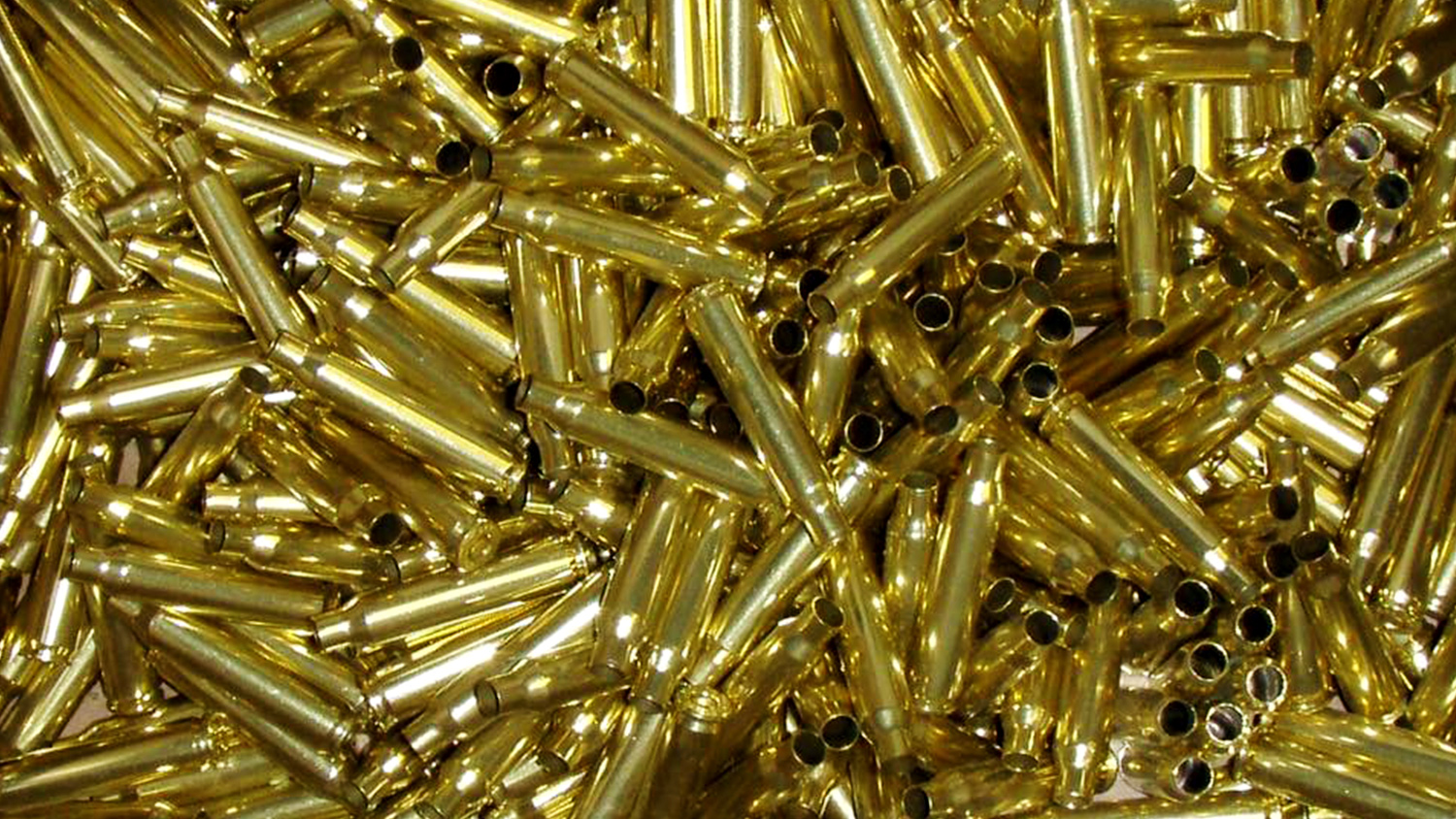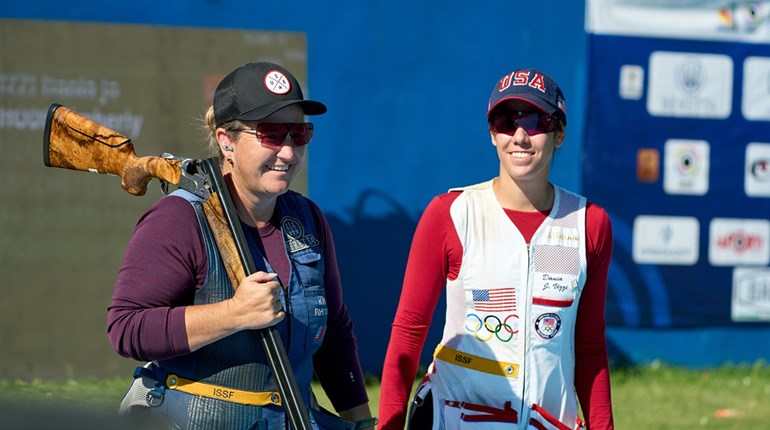
WARNING: All technical data in this publication, especially for handloading, reflect the limited experience of individuals using specific tools, products, equipment and components under specific conditions and circumstances not necessarily reported in the article and over which the National Rifle Association (NRA) has no control. The data has not otherwise been tested or verified by the NRA. The NRA, its agents, officers and employees accept no responsibility for the results obtained by persons using such data and disclaim all liability for any consequential injuries or damages.
Welcome back to the U.S. Army Marksmanship Unit’s Beginning Handloading series. Previously, we discussed causes of vertical dispersion in your groups which can be due to benchrest technique/support and rifle balance/weight issues. In this article, we’ll address mechanical issues and related ignition irregularities that can cause vertical fliers even with great ammunition in an otherwise excellent rifle.
Poor or inconsistent ignition has long been known to be one of the usual suspects when one encounters vertical fliers that “just shouldn’t be there.” By having a sense of some of the basic principles involved, and a few basic areas to check, the shooter may avoid considerable frustration, not to mention time, expensive loading components and barrel wear.
Is your well-built rifle of high-quality components plagued with vertical fliers across more than a few handload combinations? Consider the bedding, crown and scope/sight mounts. Are they correct? If so, then you might check for ignition issues before boldly undertaking an extensive, expensive, and quite possibly fruitless quest for the magic handload.
Seeing is believing: Many years ago, the author witnessed a laboratory-grade validation of this issue. He had long been aware that poor ignition should be considered and ruled out when dealing with vertical fliers in an otherwise-excellent rifle. However, actually seeing the problem and its’ almost instantaneous cure really drove the lesson home. He was working with a “dot” rifle—a .22 match rifle that really stacked bullets into little piles at 50 yards and beyond.
With one lot of Eley Tenex, it produced consistent “bughole” groups at 50. However, with another, selected lot of Tenex, similar groups were regularly ruined by single, vertical fliers that did not appear in other rifles. Rather than spending days burning up expensive, select ammunition looking for “magic lots,” he contacted a well-respected rimfire gunsmith and explained the situation.
Without so much as batting an eye, the highly-experienced gunsmith tore into the rifle’s action, and quickly found the cause(s) of the problem. He discovered a demonstrably weak firing pin spring, plus a chip out of the face of the firing pin where it contacted the cartridge rim. After replacing and tuning the offending parts, the rifle immediately began shooting tiny, bughole groups with the previously “unacceptable” lot of Tenex. Centerfire rifles can also benefit from ensuring positive, consistent ignition. A wise gunsmith can be quite literally worth his weight in gold!
So, what are some issues we as shooters can inspect in our rifles to help determine if ignition woes could be a factor? At the club level, ask yourself if that “experienced” Remington, Winchester 70 or even Springfield-based match bolt gun you’re using is still running its’ original decades old striker spring. If so, a new replacement is cheap insurance against current or future problems.
By the way, it might be best to stick to the normal, factory-spec spring weight. A super-powerful spring can cause vertical, just as a weak one can. Along with that, a routine check for proper firing-pin protrusion is a quick preventive measure that can rule out potential issues.
Other areas to consider are the centering and consistency of the firing pin’s operation in the bolt. Admittedly, with the increasing use of precision-machined custom actions, this is becoming less an issue every day. However, particularly with factory actions, a very quick and easy check is to remove the bolt, let the firing pin go forward, and look at the firing pin tip through the firing pin hole. Is the tip off-center in the hole, and possibly striking it as it moves forward? Is the hole out-of-round or burred from being struck repeatedly? If so, a trip to the riflesmith may be in order.
Similarly, machining issues in the bolt/firing pin system can lead to rough and erratic firing pin movement. Here, the firing pin drags against an internal surface of the bolt. In high-quality rifles these issues are relatively rare, but not unheard of, and it takes mere minutes to rule them out. It may be worthwhile to remove the cocking piece/firing pin/spring assembly and look for any unusual gouges, dings, peening, burrs or signs of abnormal wear.
This task is especially easy with the Winchester 70, Springfields and the similar Mauser 98. These rifles share a common military lineage. Inspection involves little more than the push of a button and unscrewing the cocking piece assembly. This is just one of the many reasons these tried-and-true actions have earned such a loyal following in the field.
Hunters, who must maintain their rifles away from a shop, have long benefited from these rifles' classic, "bullet-proof" military features. Particularly with older rifles, watch for and remove excess grease (or even Cosmoline) from both the firing pin assembly and inside the bolt. This can help improve firing pin speed and consistency. Other bolt-action designs may need a takedown tool or other measures for detailed inspection.
As part of this assessment, after ensuring the rifle is unloaded, slowly cock the rifle, dry-fire, and repeat several times. Listen carefully near the action for inconsistency in the sounds it generates. Does the striker falling make the same sound each time? Do you hear or feel grinding upon operation? If so, where?
Be sure to check the operation of the cocking piece (bolt shroud), firing pin within the bolt shroud, the cocking piece cam and the rear of the bolt body where the cocking piece cam operates. As with our examination for abnormal wear marks discussed above, look for marks indicating roughness or a possible need for light polishing. Then, clean and lightly grease the bearing surfaces while you’re at it.
These are relatively easy checks that shooters can undertake to perform a preliminary inspection on their own. Other mechanical issues can also cause ignition issues, chiefly centered on the action of the trigger, sear and sear spring. If these are suspected, a trip to an experienced, qualified gunsmith for diagnosis is highly recommended.
SSUSA thanks the U.S. Army Marksmanship Unit for allowing the reprint of this article.

































